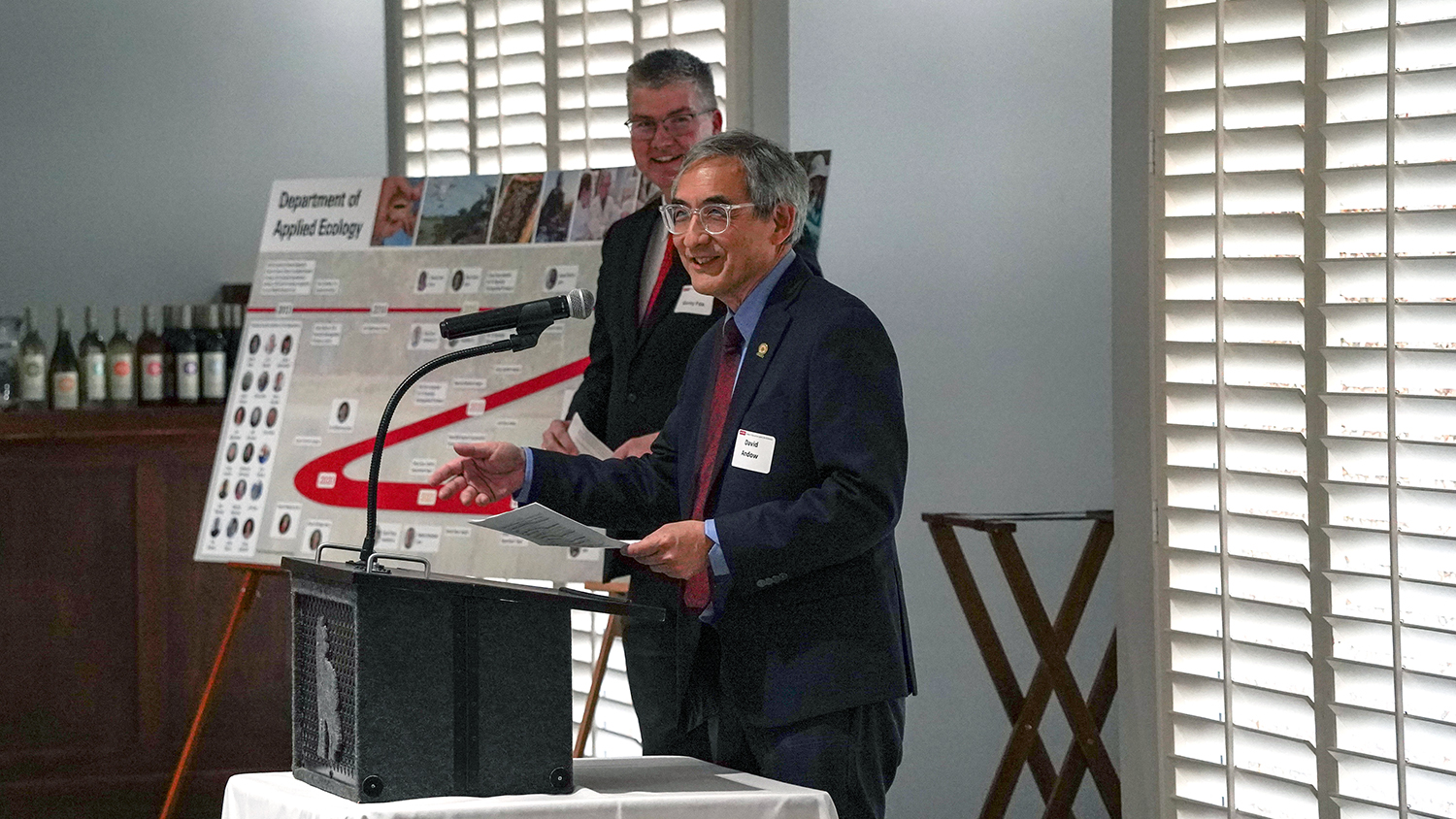NSF grant funds Phytotron renovation
The N.C. State University Phytotron, a collection of climate-controlled chambers that allows scientists to control the conditions under which plants are grown, is about to get a major renovation, thanks to a $1.79 million National Science Foundation grant.
When the Phytotron, formally known as the Southeastern Plant Environment Laboratory, first opened its doors in the spring of 1968, it was state-of-the-art, only the second such facility in the United States and one of the largest in the world.
Tucked between two of the wings of Gardner Hall, the three-story Phytotron contains 57 growth chambers ranging in size from 4-feet-by-3-feet to 8-feet-by-12-feet, along with five climate-controlled roof-top greenhouses. While the majority of the research done in the Phytotron involves plants, the facility has also been used by zoologists and entomologists.
The facility is an indispensible research tool. Within the growth chambers, scientists may control the composition of the air, temperature, humidity, day length, light spectrum, root zone temperature and nutrition available to plants. The value of the Phytotron lies in the ability it provides to isolate and change one of these factors while other factors remain constant, something that’s not possible in field or greenhouse experiments.
More than 42 years of heavy use have taken a toll on the facility, said Dr. Carole Saravitz, Phytotron director, and the renovation is much-needed. While greenhouse space has been added and some electronic controls have been upgraded, the facility has seen little in the way of renovation over the years. And many of the changes that have occurred, like leaks in the floors of the growth chambers, have not been for the better.
The National Science Foundation grant that will fund renovation was made possible by the American Recovery and Reinvestment Act, also known as economic stimulus funding. It is perhaps fitting that the National Science Foundation would fund renovation of the facility. Saravitz pointed out that an NSF grant was used to build the facility in the late 1960s and operate it during the early years.
Saravitz said the Phytotron has been able to continue to function without extensive renovation because it was designed with extra cooling capacity in the beginning to allow for repair during continuous operation. As cooling chillers needed repair over the years, they could be taken off line without limiting the facility’s capacity. Currently, however, the chambers cannot be used at the coldest temperatures possible (0 to10 degrees C). At the same time, the Phytotron staff has become adept at fixing the facility. According to the grant application submitted to NSF, the facility’s three electrical and maintenance technicians spend from 30 to 80 percent of their time repairing outdated equipment, while repair costs can top $75,000 annually.
Chillers shouldn’t be a problem, at least in the near future. Saravitz said the grant will pay for the Phytotron to be hooked up to the university’s cooling system. The facility will no longer have to rely on 40-plus-year-old chillers. The grant will also allow for the installation of new specialized chillers that will cool some chambers to freezing. Saravitz said this will be particularly useful for experiments involving the cold-hardiness of crops such as strawberries, cucumbers and watermelons, which are often planted early in the year and are susceptible to spring freezes.

The grant will also be used to replace the electronics that control the climate in the facility’s growth chambers and to repair a system that allows scientists to control the amount of carbon dioxide in chambers. CO2 is a greenhouse gas, of course, so this upgrade will make global warming studies possible.
As might be expected of a facility in which plants are constantly being watered, the concrete floors leak. Saravitz said waterproof membranes will be installed in all the growth chambers.
Perhaps the most exciting part of the project will be construction of what Saravitz called a level 3 biosafety laboratory. This lab, which will include greenhouse space, will be built on the third floor in space that is now used for storage.
The availability of the lab will allow scientists to work with plant diseases such as soybean rust, which must be carefully contained. Anyone working in the lab must shower before leaving, while any equipment that leaves the lab must be autoclaved to prevent the transmission of disease beyond the lab. Saravitz said the N.C. State School of Veterinary Medicine has a similar facility for the study of animal diseases.
The availability of a biosafety lab will allow CALS scientists to work with plant pathogens, pests and vectors that may be emerging threats but that are not yet found in North Carolina.
The project is expected to take three years to complete. Construction isn’t expected to begin until the end of the summer of 2011, with design work taking place between now and then, according to Saravitz, who said, “This will open a lot of doors for research.”
— Dave Caldwell


